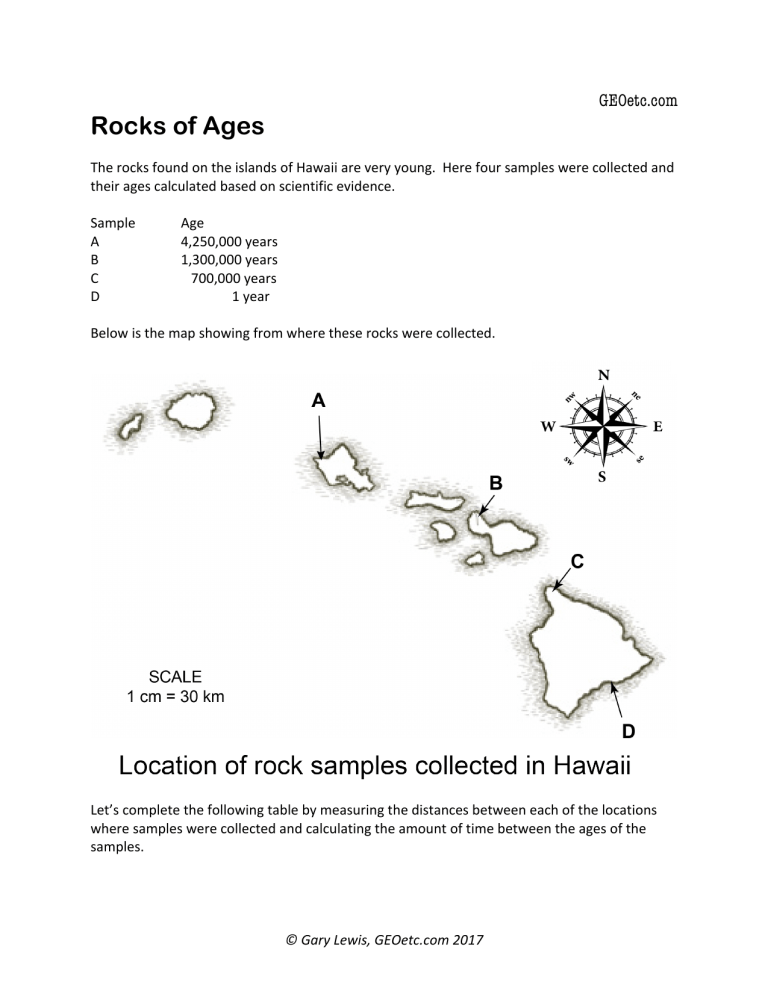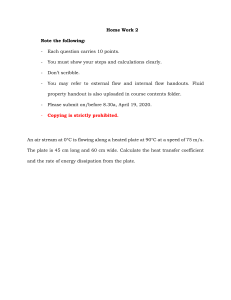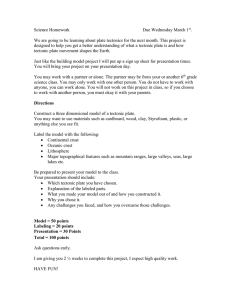
GEOetc.com Rocks of Ages The rocks found on the islands of Hawaii are very young. Here four samples were collected and their ages calculated based on scientific evidence. Sample A B C D Age 4,250,000 years 1,300,000 years 700,000 years 1 year Below is the map showing from where these rocks were collected. Let’s complete the following table by measuring the distances between each of the locations where samples were collected and calculating the amount of time between the ages of the samples. © Gary Lewis, GEOetc.com 2017 Between samples: Distance measured on map (cm) A-B 4.6 cm B-C 3.0 cm Calculated real distance (km) when 1cm=30km 138 km Difference in ages (years) 2,950,000 years C-D A-D Because all of these islands were formed from molten rock being fed from a hot spot below the tectonic plate which is moving, we can use the information in the table to work out how fast and in what direction the plate is moving. Direction At what location do we find the oldest rocks? At what location do we find the youngest rocks? If the direction of the plate movement is from the youngest rocks towards the oldest rocks, how would you describe the direction of the plate movement? (Hint: use the compass rose found on the map). How fast If we use the last row of data we calculated in our table we can calculate the speed of the tectonic plate by following these steps. STEP 1. We have to convert the real distance between A-D into centimeters. We do that by multiplying the number of kilometres by 1000 (to make it into meters) and then by 100 (to make it into centimeters) Number of km X 1000 X 100 = X 1000 X 100 = STEP 2. We now divide the number of centimeters between A-D by the difference in age between the two locations. Number of centimeters ÷ difference in age = speed of the plate (in cm per year) © Gary Lewis, GEOetc.com 2017 ÷ = cm/yr Scientists have done the same calculations between different locations and have calculated that the average speed of the Pacific Plate (that is the name for the tectonic plate that Hawaii sits on) is around 8.1 cm/yr. Describe the difference between your calculation and what scientists have found to be the average. Why do you think your number may be different from the average speed of the plate? © Gary Lewis, GEOetc.com 2017



